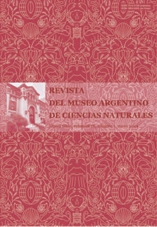El Ordovícico del sector occidental de Stara Planina (Montes Balcanes), Bulgaria: Icnofósiles e implicaciones paleobiogeográficas
Resumen
Ordovician of the western area of Stara Planina (Balkan Mountain), Bulgaria: Trace fossils and palaeogeographic implications. A thick sequence of Ordovician shales and sandstones bearing fossils (trilobites, graptolites acritarchs, and trace fossils) is exposed in the western area of Stara Planina (North-Sofía, Bulgaria). The stratigraphic section is of an Arenig to Asghill age, being characterized by its structural complexity. The lower unit, the Grohoten Formation (2000 meters thick), is composed of shales and quartzites and contains abundant trace fossils such as: Cochlichnus, Diplocraterion, Dictyodora, Glockerichnus, Gordia, Helicodromites, Helminthopsis, Hormosiroidea, Monocraterion, Palaeophycus, Phycodes, Planolites, Scolicia, Skolithos, Spirophycus, Spirophyton and Teichichnus. The upper unit, the Cerecel Formation (340 meters thick), is composed of shales and silicified siltstones, while the trace fossil assemblage is represented by Teichichnus, Zoophycos and Chondrites. The sequence is characteristic of a marine platform similar to that of other areas of central and southwestern Europe (Bohemia, Thuringia, Armorica etc) and is interpreted as related to other perigondwanic areas.
Texto completo:
PDFEnlaces refback
- No hay ningún enlace refback.

This work is licensed under a Creative Commons Attribution 3.0 License.

